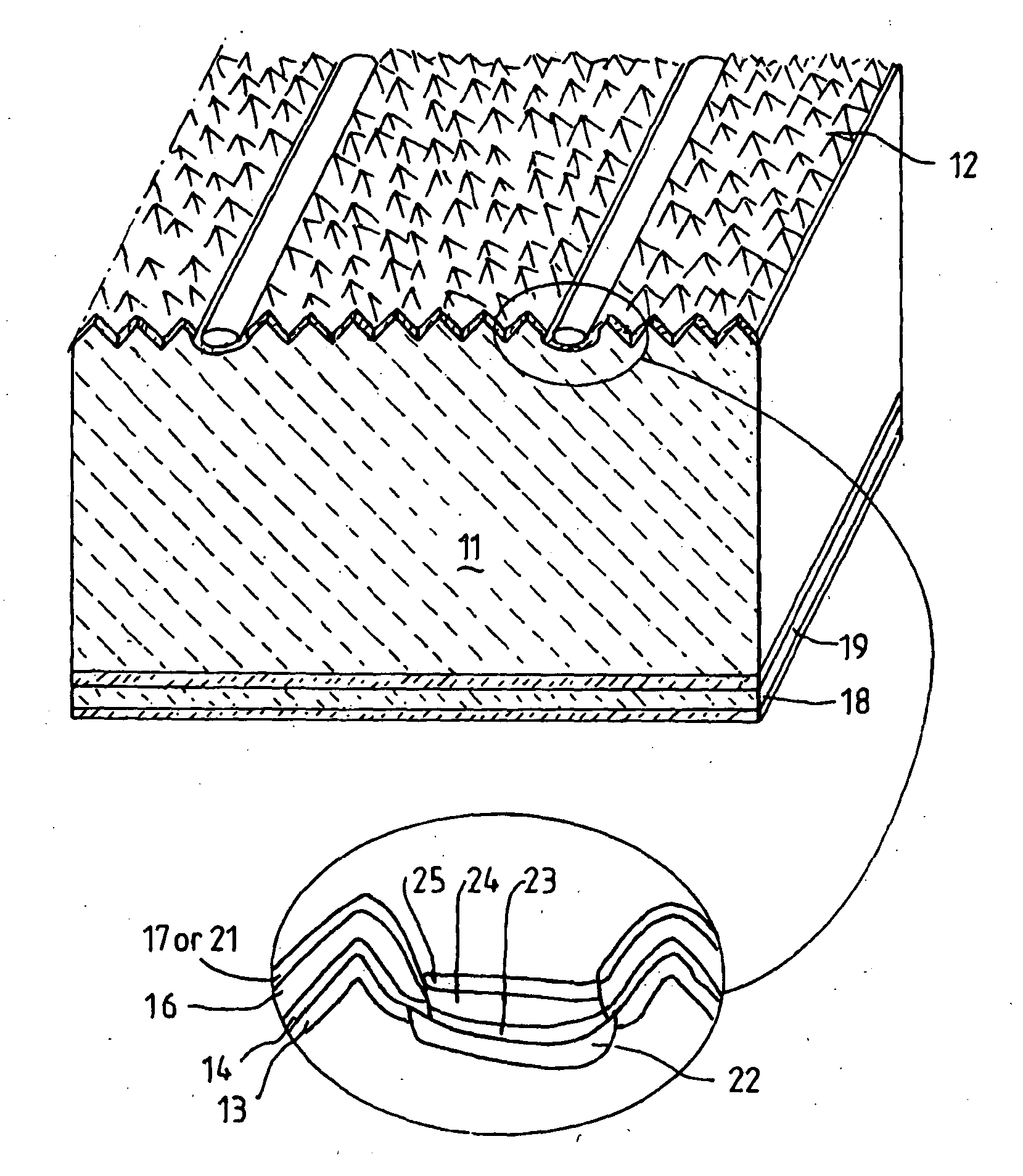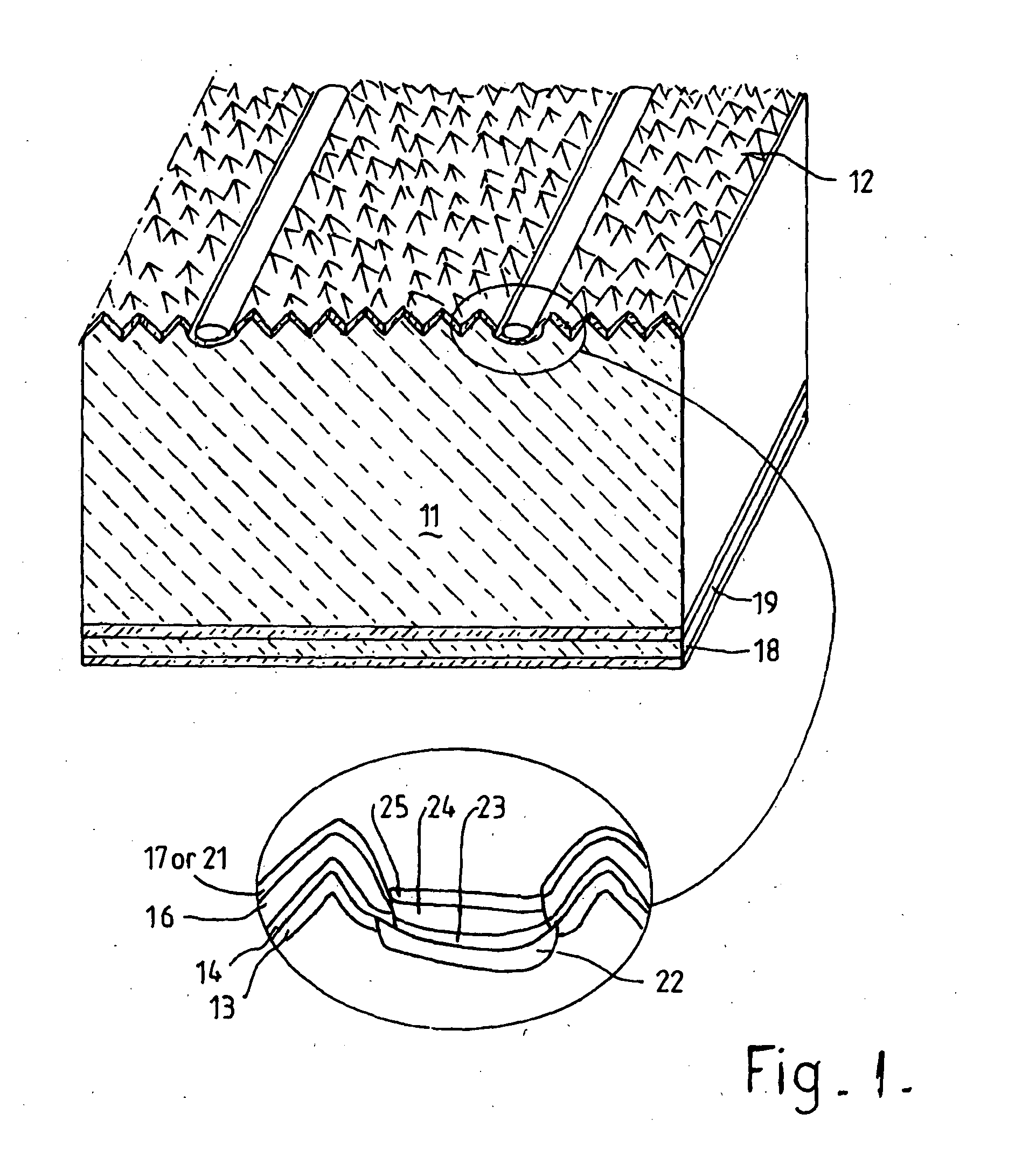Photovoltaic device structure and method
a photovoltaic device and photovoltaic technology, applied in the direction of semiconductor/solid-state device manufacturing, semiconductor devices, electrical devices, etc., can solve the problems of unsatisfactory performance of devices using laser doping in conjunction with anti-reflection coatings, unsatisfactory mixing of dopants, and unwanted ablation of doped silicon, so as to reduce the generation of defects
- Summary
- Abstract
- Description
- Claims
- Application Information
AI Technical Summary
Benefits of technology
Problems solved by technology
Method used
Image
Examples
Embodiment Construction
[0111]The application of the multi-layer ARC to multicrystalline silicon wafers has demonstrated efficiencies in the vicinity of 17% using standard commercial grade p-type multicrystalline silicon wafers. An example of a suitable fabrication sequence is as follows:
1. Isotropic texturing 12 of the front (or light receiving) surface of the p-type wafer 11;
2. front surface diffusion of n-type dopant 13;
3. edge junction isolation / psg removal;
4. four layer ARC deposition on the front surface by PECVD;
[0112]a. 100 angstroms of hydrogen rich silicon nitride 14;
[0113]b. 180 angstroms of silicon oxynitride 15 of refractive index 1.5-1.6;
[0114]c. 400 angstroms of silicon nitride 16 of refractive index 2.0-2.1;
[0115]d. Optional additional dopant containing layer 17; (This layer may be used
if dopants are not already included in the already deposited layers and where an additional separate dopant layer is not to be applied subsequently) with refractive index optically matched to the encapsulant ...
PUM
| Property | Measurement | Unit |
|---|---|---|
| time | aaaaa | aaaaa |
| temperature | aaaaa | aaaaa |
| temperature | aaaaa | aaaaa |
Abstract
Description
Claims
Application Information
 Login to View More
Login to View More - R&D
- Intellectual Property
- Life Sciences
- Materials
- Tech Scout
- Unparalleled Data Quality
- Higher Quality Content
- 60% Fewer Hallucinations
Browse by: Latest US Patents, China's latest patents, Technical Efficacy Thesaurus, Application Domain, Technology Topic, Popular Technical Reports.
© 2025 PatSnap. All rights reserved.Legal|Privacy policy|Modern Slavery Act Transparency Statement|Sitemap|About US| Contact US: help@patsnap.com



